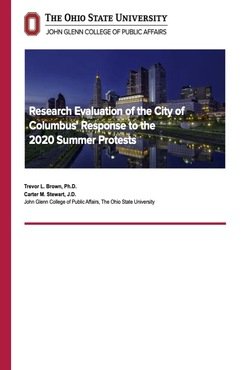By Stephen Koppel & Michael Rempel
Key Findings: Pedestrian Stops: Steep Decline in Stops Until 2022: From 2013 to 2021, the total number of stops fell by 92%. Then 2022 saw a 69% increase—the largest one-year increase in the past decade. Changing Borough Composition: Stops fell sharply in all boroughs since 2013. The decline was greatest in Queens and Brooklyn and smallest in the Bronx. From 2013 to 2022, the share of stops in Queens fell from 24% to 16%, but climbed from 13% to 30% in the Bronx, despite making up 17% of the City’s 2022 population. Widening Racial Disparities: Black and Hispanic people made up 88% of people stopped in 2022. Compared to white people, police stopped Black people at a rate 7.5 times higher in 2013, a disparity that grew to 11.8 times higher in 2022; and police stopped Hispanic people at a rate 3.5 times higher than white people in 2013, growing to 5.1 times higher in 2022. Increasing Arrest (“Hit”) Rates Until 2022: In 2013, just 8% of stops led to arrest. As police made fewer stops over the following years, the proportion that resulted in arrest rose: peaking at 38% in 2021, before falling to 33% in 2022. Stops led to an arrest for 32% of Hispanic and 33% of Black people in 2022 compared to 38% of white people. Desk Appearance Tickets (DATs): Rising DAT Issuance Since 2019: The DAT issuance rate declined in the years leading up to reform (from 29% in 2013 to 20% in 2019), before rising by 23 percentage points from 2019-2021. However, DAT issuance fell from 43% in 2021 to 29% in 2022, in part reflecting May 2022 rollbacks to reforms that initially went into effect in 2020. Declining Racial Disparities: In 2013, white people were 10 percentage points more likely to receive a DAT compared to Black people and 6 percentage points more likely compared to Hispanic people. By 2022, the Black-white gap narrowed to 6 percentage points, while the Hispanic-white gap was eliminated. Arrests: Fewer Arrests: From 2013 to 2022, the annual number of misdemeanor arrests fell by two-thirds (from 296,956 to 102,537). This included a sharp 75% drop from 2013 to 2020, followed by 13% and 23% respective increases in 2021 and 2022. Similar Racial Disparities: In 2022, Black people were 6.1 times more likely than white people to be arrested for a misdemeanor, while Hispanic people were 3.9 times more likely. These disparities are comparable to a decade ago. Decline in Youth Arrests but Rising Disparities: In 2022, youth under the age of 25 accounted for 18% of misdemeanor arrests, down from 34% in 2013. Racial disparities widened, with Black and Hispanic youth 8.3 and 4.7 times (respectively) more likely to be arrested on a misdemeanor than white youth in 2022. Prosecutions: Misdemeanor prosecutions mirrored misdemeanor arrest trends, declining by two-thirds from 2013 to 2022.
New York: Data Collaboration for Justice, 2024. 58p.




